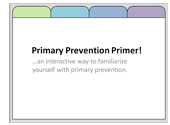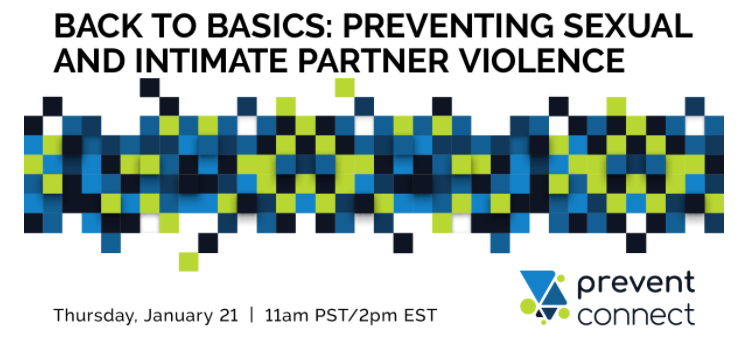Primary prevention seeks to prevent individuals from ever becoming victims or perpetrators of domestic violence and or sexual violence by using strategies that create healthy relationships and environments.
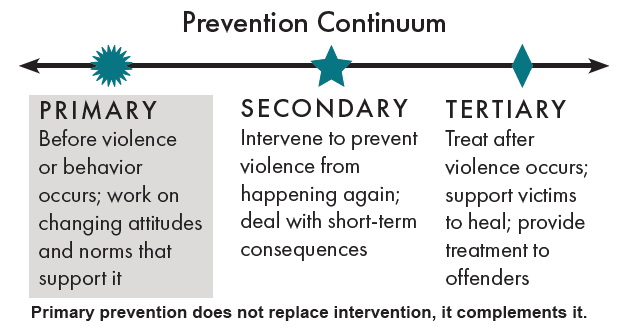
Primary prevention is often classified as an "upstream" approach. A common explanation of need for primary prevention is the "River Story" highlighting the need to "go upstream" to prevent future problems.
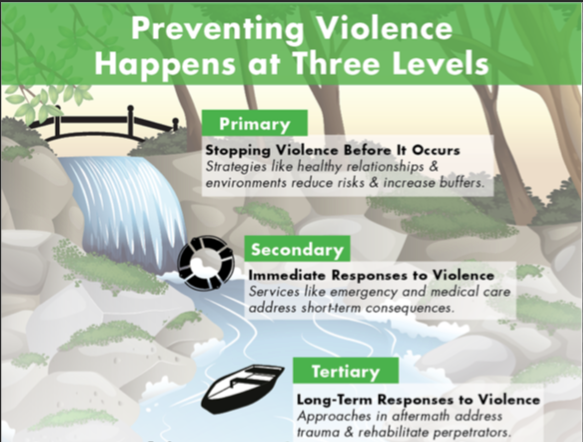
Primary Prevention Trainings
Spectrum of Prevention
The Spectrum of Prevention is a systematic tool that promotes a multifaceted range of activities for effective prevention. It identifies six levels of intervention and helps people move beyond the perception that prevention is merely education to more comprehensive prevention efforts. All six levels are complementary and synergistic: when used together, they have a greater effect than would be possible from a single activity or initiative.
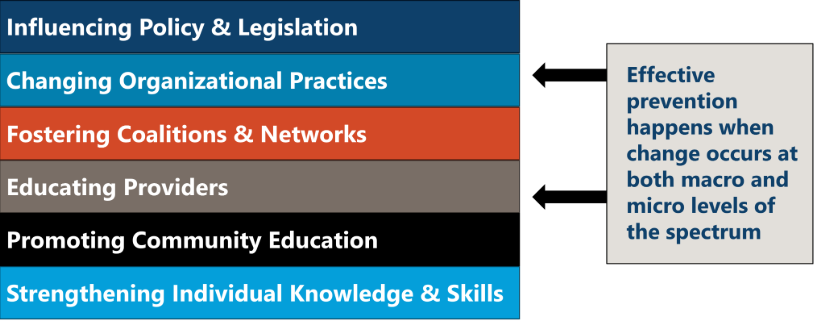
The Nine Principles of Prevention
Research has shown that there are nine overarching principles of effective prevention education programs. The full article detailing these principles can be found here.
1) Comprehensive Services
Strategies should include multiple components and affect multiple settings to address a wide range of risk and protective factors of the target problem.
2) Varied Teaching Methods
Strategies should include multiple teaching methods, including some type of active, skills-based component.
3) Sufficient Dosage
Participants need to be exposed to enough of the activity for it to have an effect.
4) Theory Driven
Preventive strategies should have scientific or logical rationale.
5) Positive Relationships
Programs should foster strong, stable, positive relationships between children and adults.
6) Appropriately Timed
Program activities should happen at a time (developmentally) that can have maximum impact in a participant's life.
7) Socioculturally Relevant
Programs should be tailored to fit within cultural beliefs and practices of specific groups, as well as local community norms.
8) Outcome Evaluation
A systematic outcome evaluation is necessary to determine whether a program or strategy worked.
9) Well-Trained Staff
Programs need to be implemented by staff members who are sensitive, competent, and have received sufficient training, support, and supervision.

